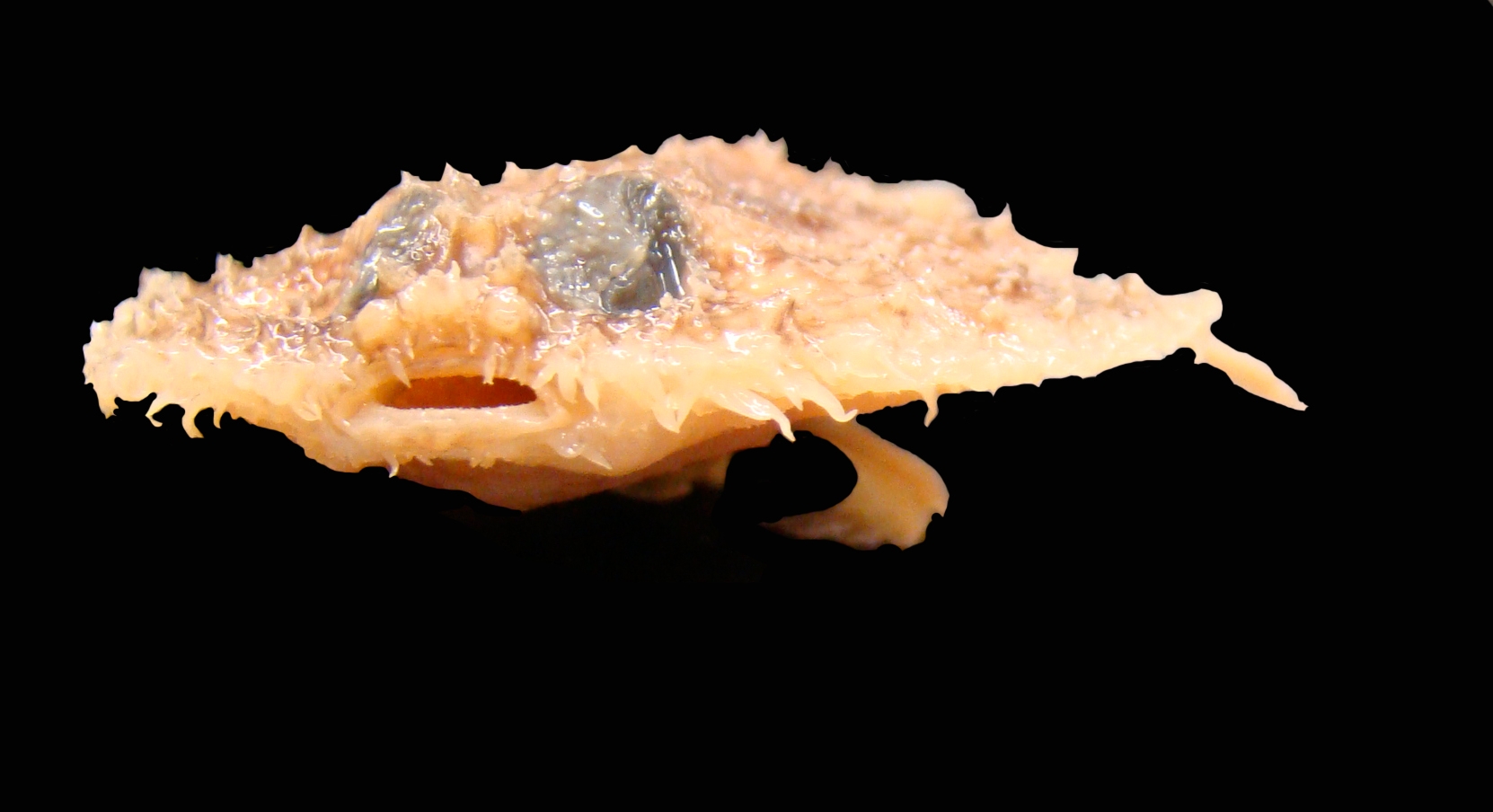

This planet is home to some incredibly awesome things, and every year we enjoy hearing about the new creatures that had, until recently, escaped biologists’ attention. Among scientists’ top 10 new species for 2010: A leech with gigantic teeth, a bioluminescent fungus, a mushroom with gills for breathing underwater and a spider that spins material 10 times stronger than Kevlar.
Topping our list of favorites is the “tyrant leech king,” Tyrannobdella rex, measuring just 2 inches in length but with a single jaw and massive teeth. This bloodsucker was found attached to the nasal mucous membrane of a person in Peru, scientists said.
This monster is followed closely by the Louisiana pancake batfish, a flat, gloopy-looking pale creature that lives in the area covered by last year’s Deepwater Horizon oil spill in the Gulf of Mexico. The pale Halieutichthys intermedius bottom-dweller hops awkwardly on its arm-like fins, resembling a walking bat.
John Sparks, one of the scientists who reported the discovery and who is curator of ichthyology at the American Museum of Natural History, said: “If we are still finding new species of fishes in the Gulf, imagine how much diversity, especially microdiversity, is out there that we do not know about.”
Here are some other highlights:
- An iron-oxide consuming bacterium that is munching on the RMS Titanic. The _ Halomonas titanicae_ bacteria sticks to steel surfaces and creates knobs of corrosion material. Researchers believe it could help dispose of old ships and, incidentally, sunken oil rigs.
- Tiny gel-coated day-glo mushrooms, discovered by biologists at San Francisco State University. The ‘shrooms are a wee 8 mm in diameter with caps just 2 centimeters across, and have been named Mycena luxaeterna (eternal light) after a movement in Mozart’s “Requiem.” There are an estimated 1.5 million species of fungi on Earth, but only 71 of them are bioluminescent.
- The Darwin’s bark spider, an orb weaver from Madagascar that builds webs big enough to span rivers, streams and lakes. In one instance, a web stretched 82 feet across a river and trapped at least 30 insects, according to a news release from Arizona State University. The spider’s silk is more than twice as strong as any other known spider silk, and 10 times stronger than an equivalent size piece of Kevlar, scientists said.
There are other insects, a fruit-eating lizard, and a cute mini antelope, too. Check out our photo gallery to see all the top 10.
These bizarre creatures are probably only the tip of the iceberg, scientists say. The top 10 list is intended to highlight the importance of ecological preservation and biodiversity, and it was announced today to celebrate the birthday of Carolus Linnaeus, who started the modern system of plant and animal names and classifications.
Scientists’ best guess is that all species discovered since 1758 represent less than 20 percent of the plants and animals living on Earth, said Quentin Wheeler, an entomologist who directs the International Institute for Species Exploration at Arizona State University.
“A reasonable estimate is that 10 million species remain to be described, named, and classified before the diversity and complexity of the biosphere is understood,” he said.
Pretty impressive when you think about it. Here we are looking for life on other worlds, but there is so much left undiscovered right here, under our noses. Or inside them, as it were.










